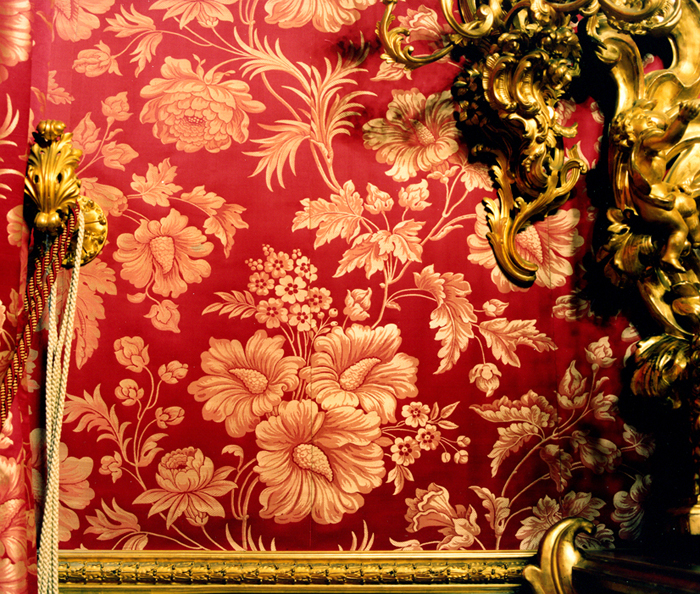
Impossible Gaze #14
Origin: Room II – Sala del Trono [Throne Room]
Appartamenti Reali
Palazzo Pitti
Each time Impossible Gaze is exhibited the interiors of Italian palazzi are dislocated from their original mooring and reinserted in another time and architecture. While not reconstituting the original experience, these photographs archaeologize the artworks and architecture of the museum to remake it with new emphasis. Using photography, history is reconstructed from the numerous images recorded by my camera lens. No longer able to move within the architecture of the original museum, the viewer is now confined by the edge of the photographs. Engaged in a “monocular vision,” their eyes can only move across the photographic surface, unable to penetrate the three-dimensional space depicted. 1
Impossible Gaze has been exhibited in Italy at the Monash University Centre, Prato (2004-5); in Australia at the Western Australian Museum , Perth , (2003); the University of the Sunshine Coast Gallery, Maroochydore (2003); and the UTS Gallery, University of Technology , Sydney (2002). Each of these gallery spaces encouraged viewers to experience and consider not only the images but also the architectural context in which they are shown and how that might contribute to the experience of the work itself. Whether displayed in purpose-built pristine galleries or refurbished old buildings, these images of historic museum interiors not only play on the relation between the old and new materiality of the objects they picture and the environment in which they are located, but also create a strange weave of time and space – the past in the present, the distance of Italy's museums, and their history and presence enlivened far from her shores.
The photographs' considerable size in the three-dimensional space of each of the galleries where they are hung encourages viewers to physically move back and forth, between a distance that allows them to see the image at a glance and close proximity, where they can study the details. The viewer's to-and-fro movement is dynamic as they move amongst the images and actively negotiate the gallery space.
The fragile skin of the ultra-glossy photographic paper used in Impossible Gaze emulates the delicate surfaces of the objects pictured. They are mounted on the gallery wall to create a flatness often like the decoration they portray. It seems irreverent to frame images that reflexively comment on the spectacular gilded frames of the past. Their detailed titles are another mechanism for interweaving the present exhibition space with the original historic locations. Each photograph pays tribute to the original artists and the date of their works and thus also maps the time and place in which the works exist today.
1. Victor Burgin, “Looking at Photographs,” in Thinking Photography (London: The MacMillan Press Ltd., 1982), 152.